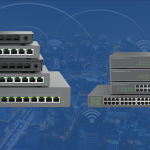VoIPon Solutions has been featured in the April 2015 issue of Comms Business Magazine.
Alexis Argent, Founder and Director of VoIPon Solutions, discusses the advantages of SIP, cost savings that can be made, SIP trunk security and more.
Who needs ISDN?
Any business without internet access, or that hasn’t already made the jump to VoIP will need ISDN. You will hear lots about ISDN or BRI (Basic rate interface – 2 channels) and ISDN30 or PRI (primary rate interface – 30 channels) but effectively it is all about how many calls one line can provide.
For those out there they are wary of SIP and the consistency of having a broadband connection, ISDN lines make you feel more comfortable, and if you are uncomfortable relying on your broadband connectivity and want something better than a standard phone line, then maybe ISDN is for you, especially if you have multiple users.
I believe nobody needs ISDN. Move with the times, broadband is very reliable. Recently a customer was buying a DECT or wireless IP phones and asked ‘What if the broadband goes down in the event of a powercut?’ If you have a power cut your DECT base station will no longer be working, and as such you will not be able to make calls anyway. It is not SIP that we need to be concerned with.
Increasingly users are turning to SIP. Why is that? What are the advantages? In fact, what are the pros and cons?
SIP is significantly less expensive compared to ISDN and more cost-effective. SIP is also more flexible. You can, for example, access your extension, and all other functionality such as adding users, from anywhere in the world. All you need is internet access and you can log in.
It is more dynamic too. You can increase or decrease your capacity and number of channels, and route calls anywhere, and do all of this within seconds.
SIP marries the flexibility of the internet to traditional comms channels like the telephone. This is not to say that ISDN is completely inflexible, you can make changes to its capacity and functionality, but these changes will take far longer and are significantly more expensive to make.
Lastly the quality of SIP, subject to using HD codecs and hardware, is excellent, and it keeps getting better all the time.
The cons really just relate to the greater number of variables involved. You have more control over and access to your system, but as a result more of the responsibility of setting up that system correctly falls on you, or rather your network administrator.
Traditional circuit switching systems have a more solid infrastructure, but you can’t access or change it easily. So with SIP you need to know what you’re doing – but this of course makes guidance and support from resellers’ all the more valuable.
The other issue to bear in mind is that if your internet access goes down, you’re cut off – at least if you don’t have a backup ISP, which, by now, most heavily comms reliant businesses really should.
Much like the progress we’ve seen in mobile phone technology and infrastructure, VoIP is becoming more stable every day. In the early days of mobile there were issues with handset size, battery life, network coverage and performance, but one by one all these challenges have been overcome. And due to the leaps made in the SIP market, it is already a viable alternative to ISDN, and is in many ways superior.
Does SIP outperform ISDN in all three areas?
Regarding flexibility and value for money, SIP outperforms ISDN without question.
Regarding reliability however, ITSP performance is very close, and getting more robust all the time. There are also, due to the flexibility of SIP, an increasing number of failsafes that can be built in – such as routing to a mobile phone.
Are all SIP trunks the same?
Yes all SIP Trunks are the same in the way they work, however it’s the routing that makes some better than others. If you choose a cheap provider then most likely you are using cheap routes, maybe without redundant or failover options. This means if your SIP provider has an outage you have no lines. Most providers will build in failover and redundant routes as contingency to ensure that, should something happen, the failover route takes over and the end user doesn’t know anything about the problem or the solution, and they are still able to receive and make calls at their leisure.
This has always been the case though. If you use a cheap SIM card in your mobile, it is highly likely the coverage will be poor, but if you use a well respected brand, coverage and usage is likely to be better. Just make sure you ask the right questions of your provider. Do you have multiple redundant routes? Do you use gold lines?
Are there real cost savings to be made?
There are definitely real cost savings to be made. The line rental and call rates are much lower, increasing capacity and buying numbers is far less expensive, and any changes are quicker to implement too.
Do the business continuity features stack up?
When it comes to business continuity, I think SIP is even better than ISDN. If your power lines or ISDN is interrupted due to a storm, how long could it take BT to fix? If you had an SLA, maybe 48 hours, but it could even take days or even weeks.
With SIP, it’s so dynamic and flexible, especially if you’ve got a backup ISP, that you can rapidly adapt to any service interruptions that might take place.
Is SIP trunk security adequately addressed?
This really comes down to the user, and how rigorously they follow best practice regarding VoIP security.
Some ITSPs are now installing code or logic that can detect when SIP trunks have been hijacked; by monitoring usage patterns and applying call and spend limits. There are number of failsafe measures available and your ITSP will be able to support you in reviewing and applying them.
Whilst securing your system thoroughly can be relatively complex due to the larger number of variables involved, there’s no reason SIP can’t be just as secure as ISDN as long as it’s set up properly.
What about overlay services?
The next step in the evolution of SIP, is to get rid of all customer premises equipment and host everything in the cloud.
This is a value add because you no longer have to look after the equipment and it makes your PBX accessible from anywhere. I’d advise any resellers involved in hosted services to take a look at this market and the potential additional revenue it offers.”
Share this story with your friends or work colleagues. If you want to stay up to date with our latest products, industry news and offers you can sign up to our monthly newsletters, keep up to date with us on Facebook or follow us on twitter @VoIPon.










